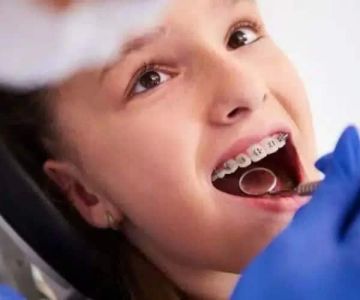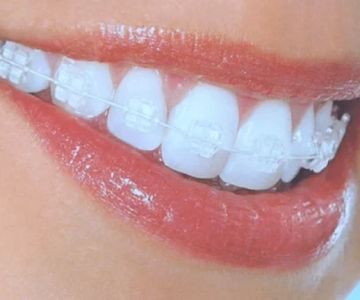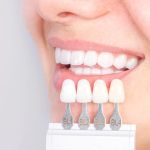Understanding Occlusion Problems: Defining Normal vs. Abnormal Occlusion
Dentistry Toothtruth is committed to educating our readers about essential dental topics, particularly those affecting our audience in the United States. One of the critical aspects of dental health is understanding occlusion problems. The alignment and function of our teeth and jaws, referred to as occlusion, play a significant role in oral health and overall well-being. In this article, we delve into what constitutes an occlusion problem and how to differentiate normal occlusion from abnormal occlusion. This knowledge is vital for anyone experiencing dental issues or considering orthodontic treatment.
1. What is Occlusion?
The term "occlusion" in dentistry refers to the alignment and contact between teeth when the jaws are closed. A well-balanced occlusion ensures that the teeth align correctly and function effectively during chewing, speaking, and other daily activities. Proper occlusion minimizes the risk of dental wear, jaw discomfort, and oral diseases. It's important to note that occlusion is a dynamic process that involves the interaction of the teeth, muscles, and temporomandibular joints. These components work harmoniously to maintain a healthy oral environment.
2. The Characteristics of Normal Occlusion
Normal occlusion, often considered ideal, is characterized by the harmonious alignment of the dental arches. In this state, each upper tooth slightly overlaps the lower tooth, with the cusps interlocking in a manner that promotes efficient function and aesthetics. The American Association of Orthodontists describes ideal occlusion as when the molar and canine teeth form a specific relationship, often referred to as "Class I" occlusion. This alignment fosters stability and reduces stress on the oral structures, preventing premature wear or discomfort. Moreover, normal occlusion contributes to a balanced facial profile, enhancing one’s appearance and self-esteem.
3. Understanding Abnormal Occlusion
Abnormal occlusion, known as malocclusion, occurs when there is a misalignment of the teeth and jaws. Malocclusion can manifest in various forms, such as overcrowding, spacing issues, overbites, underbites, and crossbites. These conditions can lead to a range of complications, including inefficient chewing, speech difficulties, increased risk of tooth decay, and temporomandibular joint disorders (TMJ). According to recent studies, approximately 50% of the U.S. population experiences some degree of malocclusion. The causes of these issues can range from genetic factors to habits like thumb sucking or tongue thrusting during childhood.
4. Identifying the Symptoms and Causes of Occlusion Problems
Recognizing the signs of occlusion problems is crucial for timely intervention. Common symptoms include jaw pain, frequent headaches, tooth sensitivity, and jaw clicking or popping sounds. Dental professionals often look for these indicators during routine check-ups. Several factors contribute to occlusion issues: hereditary patterns, early loss of primary teeth, or injuries to the mouth or jaw. For those experiencing any of these symptoms, it's essential to consult with a dental professional to determine the underlying causes and consider potential treatment options.
5. Treatment Options to Address Occlusion Problems
Treatment for occlusion problems can vary based on the severity and type of malocclusion. Orthodontic treatments, such as braces or clear aligners, are commonly used to correct misaligned teeth, while surgical interventions may be necessary for more severe jaw discrepancies. The primary goal of treatment is to achieve a functional, aesthetically pleasing occlusion that enhances oral health. Advancements in orthodontic technology have paved the way for more discreet and efficient treatment modalities, making it easier than ever for individuals to address these dental issues. Consulting with an orthodontist can provide insight into the most appropriate treatment plan tailored to individual needs.
Conclusion: Taking Action for Better Dental Health
Understanding occlusion problems and differentiating between normal and abnormal occlusion is crucial for maintaining optimal dental health. By recognizing the signs of malocclusion and seeking professional advice, individuals can take proactive steps to improve their oral function and appearance. At Dentistry Toothtruth, we encourage regular dental check-ups and consultations with orthodontic specialists to ensure that any occlusion issues are addressed promptly. Prioritizing dental health not only prevents future complications but also contributes to overall well-being and confidence. Stay informed and take action toward achieving a healthy and harmonious smile.




 T. R. Smiles Dental
T. R. Smiles Dental Elmwood Family Dental
Elmwood Family Dental Aspen Dental - Springfield, MO
Aspen Dental - Springfield, MO West Dundee Dental
West Dundee Dental Holistic Dental Wellness Center - Iman Abdeshahian, DMD
Holistic Dental Wellness Center - Iman Abdeshahian, DMD Alameda Crossing Dental Group and Orthodontics
Alameda Crossing Dental Group and Orthodontics The Importance of Oral Health Education During Pregnancy for a Healthy Pregnancy
The Importance of Oral Health Education During Pregnancy for a Healthy Pregnancy Why Skipping Dental Checkups Can Lead to Bigger Oral Health Problems
Why Skipping Dental Checkups Can Lead to Bigger Oral Health Problems Advantages of Porcelain Dental Restorations
Advantages of Porcelain Dental Restorations Best Tips for Brushing Your Teeth Properly for Healthy Gums: Essential Techniques for Oral Health
Best Tips for Brushing Your Teeth Properly for Healthy Gums: Essential Techniques for Oral Health How Can Diabetes Cause Tooth and Gum Problems? Preventing and Managing Oral Health Issues
How Can Diabetes Cause Tooth and Gum Problems? Preventing and Managing Oral Health Issues Healthy Habits for Promoting Good Oral Health and Hygiene: Tips for a Healthy Smile
Healthy Habits for Promoting Good Oral Health and Hygiene: Tips for a Healthy Smile